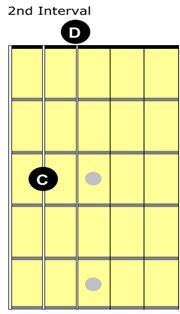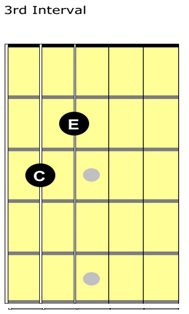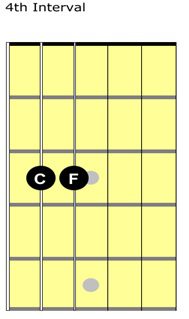How To Get Killer Guitar Riffs Without Using Barre Chords
The great Edward Van Halen turned the guitar world upside down and has influenced guitarists for decades now; and one of the most frequent comments I hear about Edward is “I love his rhythm playing just as much as his solos.”
Yet when many students who have learned primarily barre chords first attempt to play his riffs, they find out that the big 5 and 6 string barre chord shapes don't translate well at all to hard rock rhythm parts. Instead of traditional barre chord shapes, Edward Van Halen (and most other hard rockers) use smaller 2-4 note chord voicings and concentrate on certain INTERVALS to make their rhythm parts catchy and melodic.
Let me explain!
Find this website helpful? Click the button to show your support.
What Is The C Major Scale?
We refer to the distance between 2 notes as an “interval” - and the most simple way to think about this is to look at the notes of the major scale for examples. Let's have a look at the notes of the C Major scale:

If we compare 2 notes C and E and their place in the scale, we would say that C is the first note and E is the third note from C. Hence, we would say E is a 3rd interval away from C.
Following that process, we would say F is a 4th interval away from C, G is a 5th interval away from C etc.
If we start on a different note, D for instance, and counted over to F we would again find that F is the third note from D. So F is a 4th interval away from C, a 3rd interval away from D, and a 2nd interval away from E.
Do you see what we're doing here?
We can play 2 notes together simultaneously, and refer to them by their interval name.
If we play the C and E notes together, we would call that a 3rd. C and F together are a 4th, C and G a 5th and so on.
These combinations of intervals have very different sounds, and THAT is the secret to the riffs played by Edward Van Halen and others!!
These players are able to use different combinations of intervals to create riffs that have movement and melody – because each of the different intervals have their own sound and feel.
Try this little experiment:



Play the C note at the 3rd fret of the A string, and also the open D string. These 2 notes form a 2nd interval; the notes are very close together and the sound of that interval is sort of floating and unfinished.
By contrast play that C and then the E note at the 2nd fret of the D string – this is a major 3rd interval and it sounds totally happy and upbeat!
Playing our C and the F note at the 3rd fret of the D string is a 4th interval; that interval is upbeat but yet unfinished sounding.
Now try this; play the C and D together and then C and E. That combination of 2nd and then the 3rd interval creates “movement” and the sound goes from feeling slightly unfinished to solid and happy.
Do the same thing with C and F, and then play C and E. Once again you might experience the feeling of “coming home.” This simple movement is an example of how great players like Edward Van Halen use INTERVALS to create great guitar riffs instead of barre chords.
Happy guitaring!!!
